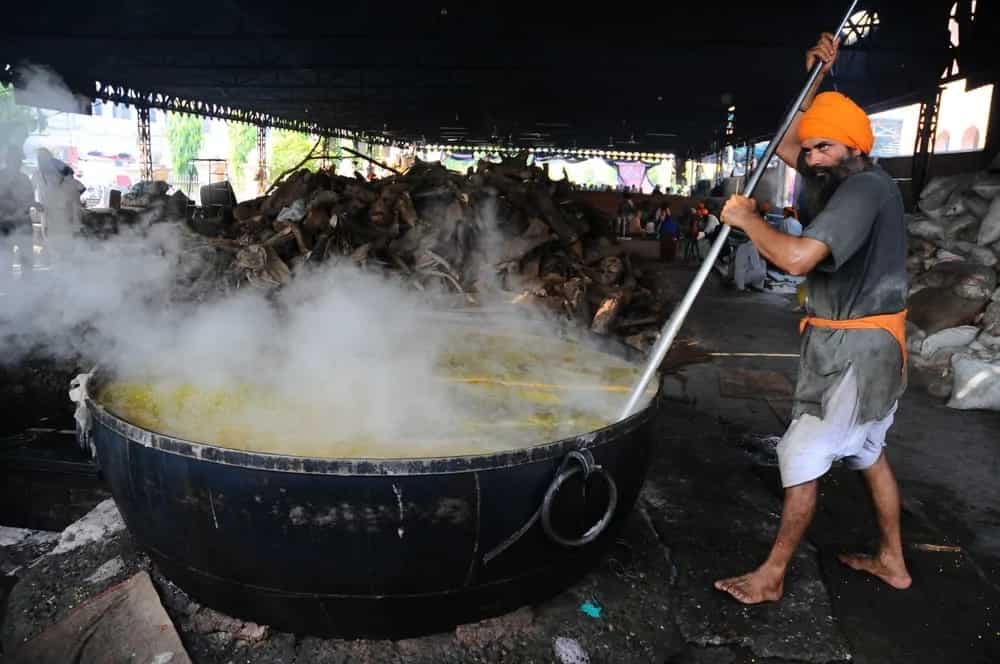The food served in Langars is completely free, the system is kept afloat by donations and community service. Eating together in this manner, and volunteering in the community that keeps the institution running, echoes the spirit of Sikhism, i.e. the equality and oneness of humankind. Most Sikhs who dine at the Langar help out after service and visitors are also encouraged to join in. Food, and ‘breaking bread’ as a community, have been part of the human experience. Sharing food has long been used to foster trust and break down barriers between different cultures.
The dishes served in the Langar are vegetarian, with an emphasis on taste and nutrition. The food is prepared in giant metal cauldrons fashioned out of ‘Sarbloh’, i.e., wrought iron, over open flames fueled by gas and wood. The dishes that make up the meal include, but are not limited to, pickle, rotis (bread), dal (lentils), and kheer (rice pudding).
The temple goes through nearly 1300 kgs of lentils, and 1000 kgs of rice each day. The food preparation goes on for 23 hours per day, with just one short break from 4:30 to 5:30 AM. This process is overseen by two of the temple's 18 head chefs, in rotation. The head chefs have several years of experience, and possess a high degree of situational awareness and physical toughness - must-haves for the job, given the long work hours, logistical challenges, and the sheer quantity of raw materials that have to be processed every single day.

The Langar has over 300 sewadars (volunteers) who help with food preparation and service. On most days, the food and bread are made by volunteers, entirely by hand. However, this can be difficult on festive days as the influx of visitors is exponentially higher. The rotis are made using a machine donated by a well-wisher from Lebanon, and the food is prepared with the help of hired staff. The machine can produce a remarkable 25,000 rotis every hour. The temple uses 10 tonnes of flour to make rotis every single day. The raw materials required for food production are purchased in bulk through donations, in cash, or in kind. The kitchen has constantly been expanding over the years to keep up with the ever-increasing number of devotees and visitors.
Langarwali dal, i.e., the lentil-based preparation, is the most time-consuming and labor-intensive dish the kitchen produces. The preparation begins at midnight and is completed by 5:00 AM, with service beginning at 8:00 AM. Over 5 such large batches are made, with the work split between two kitchens and several large cauldrons. This famous dal uses two types of lentils, urad dal (whole black gram), and chana dal (split chickpeas), and it is not uncommon for the chefs to add another quick-cooking lentil to the mix in case of increased demand. The lentils are washed and drained three times, and then boiled in five times the amount of water. They're cooked for an hour and a half, after which onions, garlic, ginger, ghee, salt, turmeric, ground spices, and chili powder are added to the dal.

The langar has never run out of food thanks to the Sangat, i.e., the community. Some people donate prepared food as offerings to the temple, while others donate financially. Sometimes, an entire day's operation may be funded by a single family. The emphasis on serving the community surrounding the temple is what makes the whole operation special, ensuring that absolutely anyone can dine at the temple without a reservation, and no bill served.


